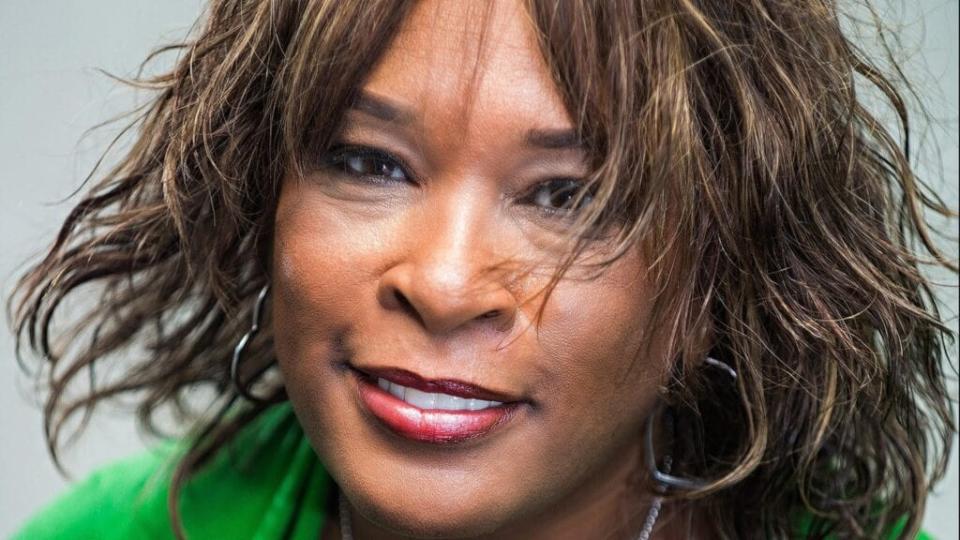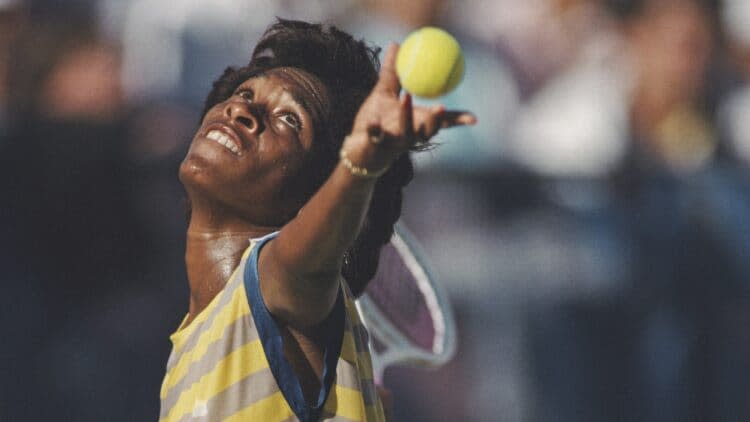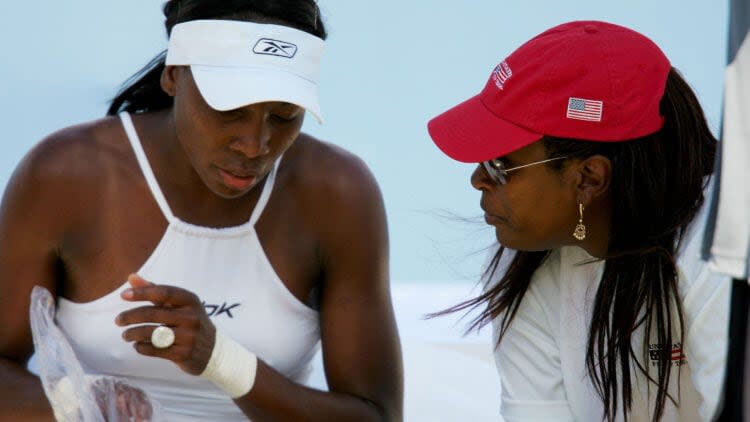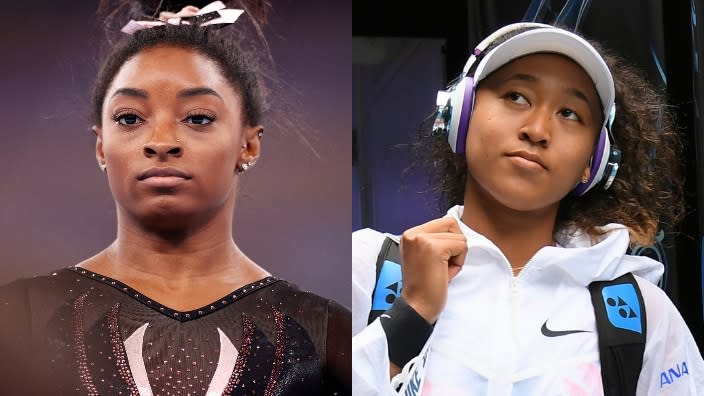Tennis icon Zina Garrison talks mental health, making history and the future of tennis
- Oops!Something went wrong.Please try again later.
- Oops!Something went wrong.Please try again later.
- Oops!Something went wrong.Please try again later.
- Oops!Something went wrong.Please try again later.
- Oops!Something went wrong.Please try again later.
- Oops!Something went wrong.Please try again later.
EXCLUSIVE: The pioneering tennis star is the tournament director for the Chicago Tennis Festival which makes her the first African American woman to lead a tournament at that level
Zina Garrison may not play tennis anymore, but her legacy is secured.
In 1988, she won gold and bronze medals for the U.S. at the Summer Olympics in Seoul, Korea, the one dominated by a track athlete widely known as FloJo. in 1990, she was the runner-up to eventual champion Martina Navratilova at Wimbledon. Garrison also won three Grand Slam titles in mixed doubles and was a top-five player at the height of her career.

But most importantly, Garrison was the African-American tennis star that helped bridge the gap between pioneering champion Althea Gibson and the dominance of Venus and Serena Williams.
The Houston, Texas native is paying it forward these days with the Zina Garrison Tennis Academy, which trains future champions in her hometown. This year, Garrison became the first Black woman in 25 years to be the director of a major tennis tournament, the Chicago Tennis Festival, that continues through Sunday, Oct. 3. It is the first major tournament promoted by an African American, Kamau Murray, and is the first Women’s Tennis Association Level 250 event to be held in what is considered a low-income area on Chicago’s South Side.
We caught up with Garrison recently to talk to her about her storied career, her tennis academy, and why the recent conversations around mental health and sports resonated for her.
theGrio: You’ve made history by being the first Black woman in 25 years to lead a major tennis tournament. How did that happen?
Zina Garrison: I first started off as assistant coach to [tennis legend] Billie Jean King for back then what was called the Fed Cup and international competition. And then I, later on, became the captain and also the captain for the Olympic teams. And then I had the opportunity to work with a couple of professionals as well. And that’s where I had the pleasure to meet a young, gung-ho guy by the name of Kamau Murray, who now has three professional tournaments that he is promoting for women’s tennis.
And that is where it’s so groundbreaking. His first one was the 125 (the amount, in thousands, of prize money awarded). The second one, which is the one I’m at now, is a 250, and then after the Open, he’ll be doing a 500. And this is definitely history because I never thought that I would actually see not one, not two, but three tournaments where the promoter is Black. And he has the XS Tennis and Education Foundation, which helps kids to learn how to play the game.

TG: What exactly are your responsibilities? And are you the first woman or first Black woman to be a tournament director for a major tournament?
Garrison: I actually am the first African-American to be for these levels of tournaments. So that’s historic. What’s my role? I just do what Kamau tells me to do, basically. But, you know, him being a promoter and putting all this together and his vision and what he’s done for the city of Chicago and around the world, he has made the African American tennis community extremely proud. I’ve gotten so many texts and everyone’s so excited that he’s been able to do this and really showcase tennis for the inner city.
TG: You’ve made history in so many ways. I think of you as the bridge between Althea Gibson, the first African American female champion in tennis, and the Williams sisters.
There were some that came along a little bit before me. But I kind of broke in the door, you know, staying in the top 10 for so many years and then myself and Lori McNeil and then later on, Chanda Rubin. But I kind of really gave, in my opinion, the opportunity to see that we could play at a very high level for a very long time. Richard Williams (Serena and Venus Williams‘ father and coach) just always told me that it was nice for Venus and Serena to see that someone like myself was out there playing.

TG: What was it like for you in those days?
Garrison: You know, I was so much into just wanting to win and trying to win, but I was really fortunate enough to have a lot of influential people around me that always told me that I had to pass on the wisdom torch and to keep it going. You know, people like Maya Angelou, like Berry Gordy. So I was always surrounded by people that helped me understand that it was very important that I had to kind of keep that wisdom going.
TG: In your heyday, tennis really was a very white sport, at least in terms of Grand Slam tennis. But Black people have been playing tennis for a really long time.
Garrison: A very long time and people don’t realize that. And they’ve been playing it and playing it well. You know, you have the ATA, the American Tennis Association. I think it’s 100 and something years old now because we weren’t allowed to play with the United States Tennis Association. They basically sat up and started their own association. With Venus and Serena, a lot of times people think like, oh, they just came from nowhere, but they did come from a long line of AfricanAmericans that play tennis.
TG: You had some public struggles when you were playing. When you’re seeing people like Naomi Osaka and Simone Biles talk about their experiences with mental and physical health, what’s your perspective on that? And what advice would you give to athletes now who are dealing with so much public pressure?

Garrison: When [Naomi] came out and said, ‘Hey, hold on, I want to take a break,’ she opened up the awareness, more so for sports, but also in the working community. I was talking to a friend not too long ago and she said because of Naomi, now her job is really looking at giving people a couple of days for mental health. And then Simone took it to a whole ‘nother level. And us as athletes, or former athletes, that’s all part of learning how to balance. But in this day and age, with the social media and everything, things get out there very quickly and it can be good and it can be bad. But the fact is, they were both strong enough, Simone and Naomi, to say, ‘Hey, sometimes you need you just need to take a break.’
TG: I’m imagining you saying something like that back when you were playing.
Garrison: I couldn’t have said that. With my eating disorder, (Garrison struggled with bulimia in the early days of her career) you know, I got labeled all the time. ‘Well, she has a mental health problem.’ What? I got an eating disorder. Like, how many other people got an eating disorder? I just happened to speak about it and I wasn’t afraid to speak about it. But you do get labeled.
TG: You are shaping the tennis stars of the future. There will be a bit of a void in American tennis without the Williams sisters, which we figure is coming sooner than later. Of course, there are players like Sloane Stephens, Coco Gauff, and Naomi Osaka. Is there somewhere we should be looking to make, create or support the next tennis stars? How can we get more participation in the sport, particularly from African Americans?
Garrison: It’s very interesting because I’ve been wondering over the last year why we don’t have more male African American tennis players. MaliVai Washington was the last one who made it to the finals in Wimbledon, and other than Frances Tiafoe, there really hasn’t been anyone. What you need is a group of people that come out that push each other not just Black tennis, but American tennis for men. It’s been a while since Andy Roddick.
TG: Tennis is among the top-earning sports and it’s one where you can have a long career because you don’t tear your body up, yet you don’t see the same enthusiasm for the sport as you do for football or basketball. Are tournaments like Kamau’s is something that can garner more interest?
Garrison: I was watching the Chicago Tennis Festival on television and I called up Kamau and I said, ‘Wow. Look at the African American ball kids.’ Or the kids here at XS Tennis Foundation having the opportunity to walk among or see some of the best women’s tennis players in the world. Something as simple as that, being that close to a professional level, if you can see it, then you can dream it. It’s really just that simple. You can’t buy that.
For more information on tennis education programs and tournaments:
The Zina Garrison Tennis Academy
Have you subscribed to theGrio’s new podcast “Dear Culture”? Download our newest episodes now!
TheGrio is now on Apple TV, Amazon Fire, and Roku. Download theGrio today!
The post Tennis icon Zina Garrison talks mental health, making history and the future of tennis appeared first on TheGrio.

